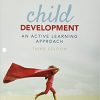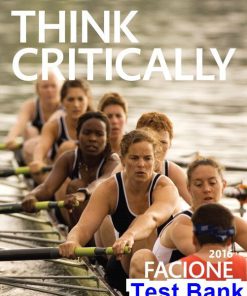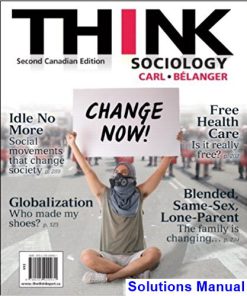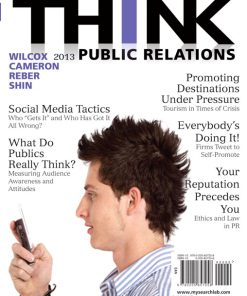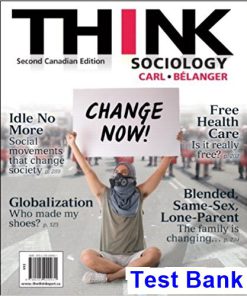Test Bank for THINK Sociology, 2nd Edition: Carl
$35.00 Original price was: $35.00.$26.50Current price is: $26.50.
Test Bank for THINK Sociology, 2nd Edition: Carl
This is completed downloadable of Test Bank for THINK Sociology, 2nd Edition: Carl
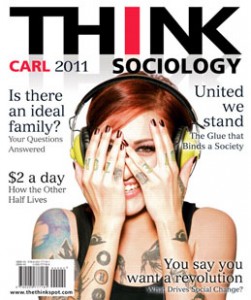
Product Details:
- ISBN-10 : 020577718X
- ISBN-13 : 978-0205777181
- Author: John Carl
With an engaging visual design, 15 page chapters, and readings from popular trade titles, THINK Sociologyis the introductory Sociology text your students will read.
THINK Sociology is informed with the latest research and the most contemporary examples, allowing you to bring current events directly into your classroom with little additional work.
An engaging visual design developed with the benefit of extensive student feedback will appeal to your students and deliver the core concepts of Sociology in a way that they can actually understand.
The groundbreaking instructor supplements package will help you bring the core concepts of Sociology to life, without burdening your students with heavy, too dense and too expensive learning solutions.
Thinkspot, the text’s open access website, provides students with a large resource of tools to help them achieve a better grade.
Table of Content:
Chapter 1. Sociology: An Introduction to the Foundations of Sociology
· New section on “Emerging Paradigms” to include Feminist Theory, Exchange Theory, and Environmental Theory
Chapter 2. Sociological Research: How Do We Learn about Society?
· Revised “Go Global” box to focus on “International Voting Statistics”
· New table on statistics from US CDC on Fertility Trends in US
Chapter 3. Culture: A Framework for the Individual
· Coverage of symbols revised to include swastikas with various connotations
· New data on racism in the US
Chapter 4. Social Structure and Interaction: Micro and Macro Orientations
· New data/research on hierarchical status
· Revised coverage of Symbolic Interactionism
· Revised coverage of Conflict Theory
Chapter 5. Socialization: The Process of Fitting into Society
· Revised opening book: “Consuming Kids” by Susan Linn
· Revised introductory text
· Revised Classroom to Community feature
Chapter 6. Groups and Societies: Understanding our Environment
· Revised coverage of special groups
· Revised coverage of decision making
Chapter 7. Social Class in the United States: Stratification in a Modern Society
· New pie chart on income distribution
· New information on poverty and the “near poor”
· Revised “Think Sociologically” feature
· New information on mobility
· Revised Social Policy feature: Taxes and Social Insurance
Chapter 8. Global Stratification: Wealth and Poverty in the World
· New opening book: “The Bottom Billion” by Paul Collier
· Revised introduction to reflect new opening book content
· New material on poverty and hunger
· New chart on Poverty Rates on 10 Developed Countries
· Revised information on Quality of Life
Chapter 9. Population and Environmental Impact: How Do Societies Deal with Growing Numbers?
· Revised table of Birth Rate, Death Rate, and Rate of Natural Increase for 10 Largest Countries
· Make Connections box revised to include Gulf of Mexico oil spill
· Think Sociologically featured revised to focus on “Climate Change”
Chapter 10. Race and Ethnic Stratification: Is it a Question of Color?
· Race infographic updated and revised
· Revised “Make Connections” box
Chapter 11. Gender Stratification: The Social Side of Sex
· New opening book: “Guyland” by Michael Kimmel
· Revised content on Gender Construction
· New Census data throughout
· Revised content in “Make Connections” box
Chapter 12. Aging and Health: The Graying of Society
· New information on the elderly in the US
· New content in the Think Sociologically feature on Health Care Reform
Chapter 13. Crime and the Legal System: How Do Societies Respond to Crime and Deviance?
· Revised table on crime statistics/international perspective on crime statistics
Chapter 14. Marriage and Family: How Do Societies Perpetuate Themselves?
· New content on empty nesters/international perspective on empty nesters
Chapter 15. Education and Religion: How Do Societies Pass on Information?
· New content in revised “Make Connections” box
· Content from Barbara Ehrenreich’s “Bright-Sided” re: Christianity
Chapter 16. Economy and Politics: How Do Societies Support and Govern Themselves?
· Revised “Make Connections” box, focus on Tea Party
· New content on campaign funding
· New content on conditions at Walter Reed Hospital
Chapter 17. Social Movements, Collective Behavior, and Social Change: How Do Societies Change?
· New Opening Book: “Flavor of the Month” by Joel Best
· New introductory text
· Revised content on Social Policy
· New content on CAFÉ standards for cars
Table of Contents
IN THIS SECTION:
1. BRIEF
2. COMPREHENSIVE
BRIEF TABLE OF CONTENTS:
Chapter 1. Sociology: An Introduction to the Foundations of Sociology
Chapter 2. Sociological Research: How Do We Learn about Society?
Chapter 3. Culture: A Framework for the Individual
Chapter 4. Social Structure and Interaction: Micro and Macro Orientations
Chapter 5. Socialization: The Process of Fitting into Society
Chapter 6. Groups and Societies: Understanding our Environment
Chapter 7. Social Class in the United States: Stratification in a Modern Society
Chapter 8. Global Stratification: Wealth and Poverty in the World
Chapter 9. Population and Environmental Impact: How Do Societies Deal with Growing Numbers?
Chapter 10. Race and Ethnic Stratification: Is it a Question of Color?
Chapter 11. Gender Stratification: The Social Side of Sex
Chapter 12. Aging and Health: The Graying of Society
Chapter 13. Crime and the Legal System: How Do Societies Respond to Crime and Deviance?
Chapter 14. Marriage and Family: How Do Societies Perpetuate Themselves?
Chapter 15. Education and Religion: How Do Societies Pass on Information?
Chapter 16. Economy and Politics: How Do Societies Support and Govern Themselves?
Chapter 17. Social Movements, Collective Behavior, and Social Change: How Do Societies Change?
COMPREHENSIVE TABLE OF CONTENTS:
(Each chapter has 3 sections: Get the Topic, Think Sociologically, and Discover Sociology in Action)
Chapter 1: Sociology: An Introduction to the Foundations of Sociology
Sociology Defined
Developing a Sociological Imagination
Emile Durkheim’s Theory on Suicide
The Functionalist’s Worldview
Functionalism in the United States
The Conflict Theorist’s Worldview
The Symbolic Interactionist’s Worldview
The Three Paradigms: How are They Interrelated?
Getting Involved in Sociology– Community Learning
Chapter 2: Sociological Research: How Do We Learn About Society?
Objectivity
Variables
Cause and Correlation
Scientific Method: What Are the Six Stephs of Social Research?
Quantitative and Qualitative Methods
Triangulation
Research Methods and the Three Paradigms
Social Policy and Statistics
Community Learning– Needs Assessments
Chapter 3: Culture: A Framework for the Individual
Material Culture
Nonmaterial Culture
Additional Values
Norms and Sanctions
The Study of Culture
Symbolic Interactionism– A Crisis of Values
Functionalism– Communitarianism
Conflict Theory– The McDonaldization of the United States
Social Policy: Multiculturalism and Assimilation
Chapter 4: Social Structure and Interaction: Micro and Macro Orientations
Macrosociology and Microsociology
Micro Orientations: Social Interactions
An Example of Symbolic Interactionism: The Thomas Theorem and the Social Creation of Reality
An Example of Functionalism: Study Essential Features of Functional Social Structures
An Example of Conflict Theory: Deliberate Efforts to Weaken the Structure and Culture of Native Americans
Social Policy — The Perry Preschool Project
Chapter 5: Socialization: The Process of Fitting into Society
The Nature vs. Nurture Debate — What Makes Us Who We Are?
Theorists on Socialization
Agents of Socialization
Can We Be ‘Resocialized’? Experiencing the Total Institution
Symbolic Interactionism and Resocialization
Functionalism
Conflict Theory — What Forces Socialize Us?
Applying Sociological Thinking in the World, Social Policy, and Title IX
Chapter 6: Groups and Societies: Understanding Our Environment
Formal Organizations
Functionalism and Leadership
Conflict Theory — Marx, Bureaucracy, and Democratic Organizations
Symbolic Interactionism — Creating a Just and Democratic Workplace
Adult Civic Engagement and Childhood Activities
Leading Groups
Chapter 7: Social Class in the United States: Stratification in a Modern Society
How Does the United States Define Poverty?
Social Mobility
Functionalism
Conflict Theory
Symbolic Interactionism
Social Policy: Welfare for the Poor
Social Policy: Minimum Wage
Chapter 8: Global Stratification: Wealth and Poverty in the World
Global Stratification
Social Systems
Global Stratification: No Longer a Third World
Functionalism
Conflict Theory
Symbolic Interactionism
Social Policy: Foreign Aid
Chapter 9: Population and Environmental Impact: How Do Societies Deal with Growing Numbers?
Population by the Numbers
Malthusian Theory
Demographic Transition Theory
Issues Associated with Population Growth
Human Exemptionism
Environmental Sociology
Population Control Programs
Chapter 10: Race and Ethnic Stratification: Is It a Question of Color?
Census Definitions
Racial Stratification in the United States
Symbolic Interactionism: Color-Blind Racism
Affirmative Action
Chapter 11: Gender Stratification: The Social Side of Sex
Gender vs. Sex
Patriarchy and Sexism
Gender Roles
Gender and Inequality
Feminism
Feminist Theory
Functionalism
Conflict Theory
Symbolic Interactionism
Chapter 12: Aging and Health: The Graying of Society
Health Defined
Health in the United States: Living off the Fat of the Land
Health Care
Aging: The Graying of the United States
Functionism — Disengaging from Society
Symbolic Interactionism — Living an Active Lifestyle
Conflict Theory — Aging and Inequality
Social Security and Medicare
Chapter 13: Crime and the Legal System: How Do Societies Respond to Crime and Deviance?
Deviance vs. Crime
Historical Roots of Deviance and Crime Theories
Functional Explanations of Crime and Deviance
Social Interaction Theories
Symbolic Interaction Theories
Symbolic Interactionist Theory
Social Conflict Theory
General Theories of Crime Causation
Crime Control: The Criminal Justice System
Chapter 14: Marriage and Family: How Do Societies Perpetuate Themselves?
Marriage and Family
Symbolic Interactionism
Conflict Theory
Functionalism
Gay Marriage vs. Civil Unions vs. Nothing
Chapter 15: Education and Religion: How Do Societies Pass on Information?
Education in Society
Religion
Symbolic Interactionism
Functionalism
Conflict Theory
Improving Education with School Vouchers
Chapter 16: Economy and Politics: How Do Societies Support and Govern Themselves?
Economic Systems
Global Economy
Political Systems
Types of Government
Politics in the United States
The Nature of Power
Lack of ASsistance for Veterans
Chapter 17: Social Movements, Collective Behavior, and Social Change: How Do Societies Change?
Shifts in Society
Shifts in Society
Resistance to Change
Conflict Theory
Functionalism
Symbolic Interactionism
Acknowledgements
About the Author
Glossary
Endnotes
Photo Credits
Index
People Also Search:
think sociology
think sociology 2nd edition
think sociology 2nd edition carl
think sociology 2nd edition testbank download pdf
think sociology 2nd edition download scribd
You may also like…
Solution Manual


